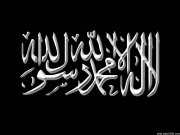Sunshine and Moonlight
Do languages differentiate between the light coming from the sun and moon? Most languages give such a phenomena one linguistic name or term. But in the Arabic language whose source is the Holy Quran differentiates between these two phenomena. Before giving definitions to these two phenomena, one is to consider how Allah in the Holy Quran differentiates between these two terms and why does Allah do that?
Showing a difference between sunshine( dhiya ashems) and moonlight ( nour al-qamer), the Holy Quran says, “It is He who made the sun to be a shining glory And the moon to be a light (Of beauty).” [10:5] The verse clearly draws a line between shine (dhiya) and light (nour) and their sources. But in most modern dictionaries especially in foreign languages, these two terms( dhiya and nour) are observed as one phenomenon and thus linguistically as synonyms.
Nevertheless, Allah, Exalted in Might, differentiates between these two phenomena. Does this mean that there is a scientific justification for that?
To find the answer is to read and reflect on some verses which have or talk about the sun and moon. One of these is: “And (He) made the moon a light in their midst, And made the sun as a (Glorious) Lamp” [(71:16)]. Another one is: “ And ( have We not) Built over you the seven firmaments, (12) And placed (therein) A blazing lamp (13).” [78:12-13]. In the first one, Allah compares the sun to a lamp and in the other to a blazing or glowing lamp. Commonly, a lamp generates rays by the use of oil or electric power. In contrasts, the moon’s illumination has repeatedly been referred to as light, a reflection of the sun’s blaze. In school, that there are two sources of light, one direct and the other indirect, was taught in physics. Examples of the former are the sun, candles, stars, lamps, and the like while the latter is like the moon and planets. That is, the former source being direct generates light while the latter being indirect reflects light like a mirror.
For the sun and a lamp have a similar function being the generation of light, Allah compares the sun to a lamp. But never has there been a reference in the Holy Quran to the moon as a glowing object, since the moon only reflects the sun’s rays which man sees from earth. Thus the moon’s reflection of sun’s blazing is referred to in the Holy Quran as (nour) light.
More over what is so amazing is that the divine accurate use and differentiation of these two terms was not taken into consideration. Linguists did not define that rays coming from the sun shall be called (dhaw’e) glow, while the moon’s reflection of these rays shall be called (nour) light. There was some kind of overlapping in the use of these terms. (dhaw’e) Glow was used while (nour) light was set on the shelf. Yet the reason is that in English, French, and German as being the source of modern science there is no differentiation of these two phenomena. English, French, and German linguistically refer to both phenomena as, “Light, Lumiere and Licht,” respectively. Even Arab translators and scientists of this field were ignorant to that Arabic may have a richer bank of lexical items and more accurate in linguistically dealing with these two phenomena according to their being the result of a direct or indirect source.
(Reference: Al-Mahjeri, Yahya (Dr.) Quranic Verses in Light of Science.)
In line with the above discussion, an American film company produced a film entitled “A Giant Leap in Discovering the Moon’s Geology.” Showing the efforts of American exerted in discovering the moon, the film from the beginning to end talks about how the Americans were able to discover that the moon used to be in a state of glowing or burning. That is, in the past, the moon was a source of radiance but then it cooled down. To evidence such a discovery, instruments or apparatuses of sound wave production were sent to the moon; producing and measuring sound waves, these instruments showed that the center of the moon is still burning.
Samples of its center components, rocks, mountains and valleys were brought down. These samples were studied and analyzed; the findings were that the moon was once glowing and it cooled down. Accordingly this discovery proved the content of the following Quranic verse in which Allah, Exalted in Might, says. “We have made the Night And the Day as two (of Our) Signs: the Sign of the Night have We made dark While the Sign of the Day We have made bright . . . “ [17:12]. Ibn Abbas as one the leading Muslim scholars in Quranic studies comments on this by saying, “ the sign of night is the moon while that of the day is the sun. The darkening of the night’s sign indicates that the moon used to glow but it does not any longer. This is why Allah, Exalted in Might, says,‘ Blessed is He Who made Constellations in the skies, And placed therein a Lamp And a Moon giving light (nour);’ [25:61]”
Last but not least, had this Quran been the fabrication of Muhammad, a mere human being, he would have said two lamps; one for the day time and other for the night; the former being warm and the latter being cool. But this Holy Quran is a revelation from Allah, who encompasses all knowledge and wisdom.
Also even the order of the objects as the sun being like a lamp and the moon having light shows that the moon gets its light which it reflects from the glowing of the sun.
This shows the Greatness of Allah.
(El Zindani, Abdel Majeed, Science is the Path of Faith)


Welcome to
Imaan.net.tc

Contact : info@Imaan.net.tc Copyright 2002-2008 Imaan.net.tc Inc. All Rights Reserved.
